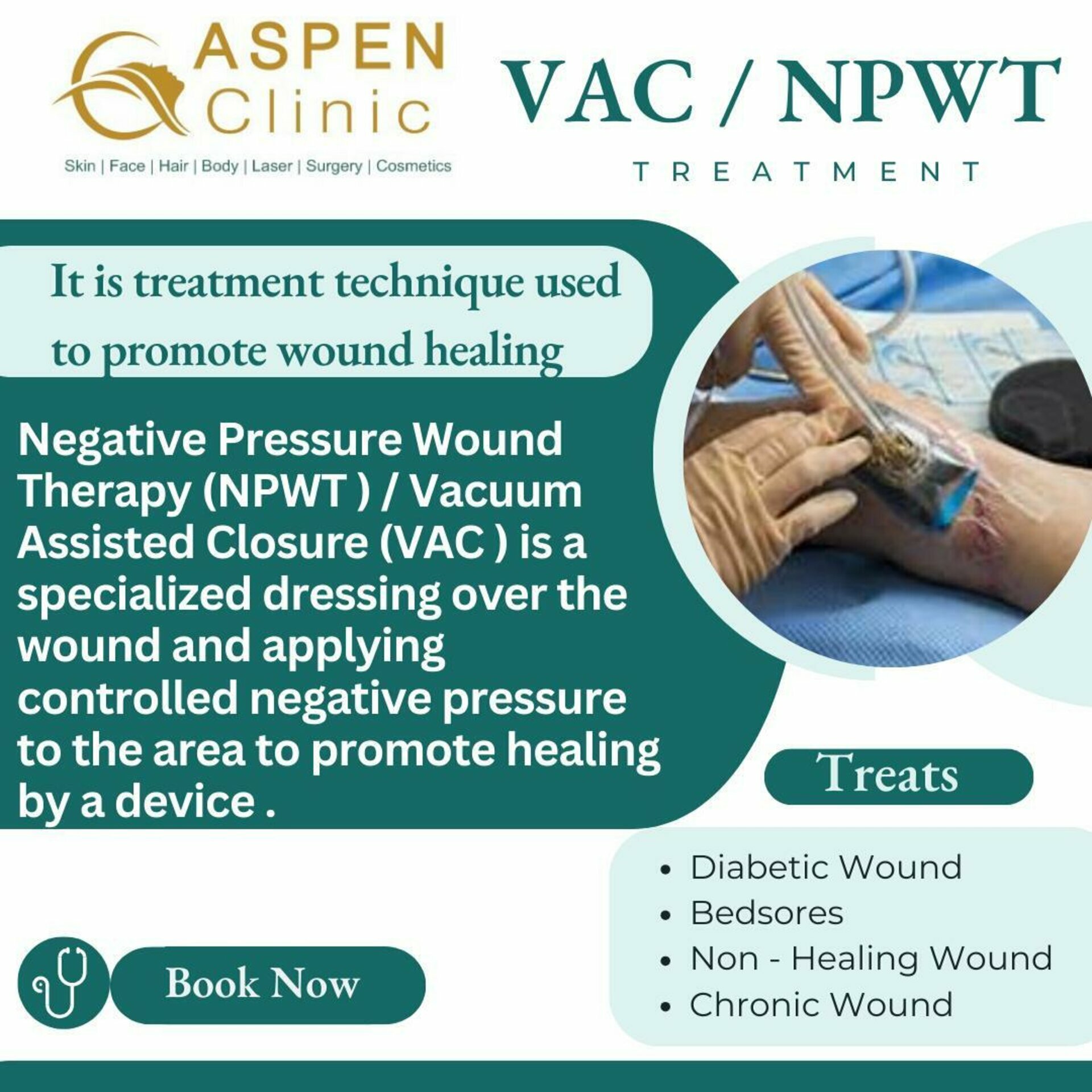Advanced Wound Care treatment| Dr. Hina Khan
Wound Treatments- Wound care Discover unparalleled wound care at ASPEN Clinic with our advanced Negative Pressure Wound Therapy (NPWT) solutions. Experience accelerated healing and exceptional care with ASPEN Clinic's renowned wound care services. Trust us to guide you on your journey to recovery with precision and compassion.
What is the wound?
A wound is an injury or damage to the body's tissue. It can occur for various reasons such as accidents, cuts, scrapes, burns, or surgical incisions. Wounds can vary in severity, from minor cuts and abrasions to deep lacerations or puncture wounds. In simple terms, a wound is an injury to the body that damages the skin or other tissues. It can happen from accidents, cuts, scrapes, burns, or any other damage to the body.
When a wound occurs, it disrupts the normal structure and function of the affected area, and the body responds by initiating a healing process. This process typically involves inflammation, tissue repair, and regeneration. Proper wound care is essential to facilitate healing and prevent complications such as infection.

What are types of wound on the basis of healing?
- Healing Wounds
Healing wounds close and repair normally, usually within weeks. Factors that contribute to the healing of wounds include adequate blood supply, proper wound care, absence of infection, and overall good health.
- Non-Healing Wounds
Non-healing wounds don't heal within a reasonable time, often due to poor blood flow, infections, or health issues like diabetes. They need special care and treatment. Examples include diabetic ulcers, venous ulcers, bed sores, and some surgical wounds with complications. Non-healing wounds need special care and treatment to heal.
Treatment of non-healing wounds often requires a comprehensive approach involving addressing underlying causes, wound debridement, infection management, optimizing nutrition, and specialized wound care techniques or therapies such as advanced dressings, negative pressure wound therapy, or even surgical interventions in some cases.
What is Negative Pressure Wound Therapy (NPWT) for wounds?
Negative Pressure Wound Therapy (NPWT) is a treatment technique used to promote wound healing. It involves placing a specialized dressing over the wound and applying controlled negative pressure (suction) to the area.
Key benefits include:
- Remove excess fluid and infectious material from the wound, reducing swelling and preventing infection.
- Increase blood flow to the wound, which promotes the delivery of oxygen and nutrients necessary for healing.
- Stimulate the growth of new tissue and blood vessels, accelerating the healing process.
- Reduce wound size and improve wound closure.
NPWT can be used for various types of wounds, including chronic, non-healing wounds such as ;
Chronic wounds (such as diabetic ulcers)
- Pressure ulcers
- Surgical wounds
- Traumatic wounds
- Venous leg ulcers
- Large surface area wounds
The negative pressure is typically applied using a specialized pump device connected to the dressing. The pressure level and duration of treatment are carefully controlled and monitored by healthcare professionals based on the specific needs of the wound and the patient. The treatment duration varies based on the severity and nature of the wound. NPWT is considered a valuable adjunctive
therapy for promoting wound healing, especially in cases where conventional wound care methods may be insufficient. Overall, NPWT is a valuable adjunctive therapy in wound management, particularly for complex or non-healing wounds, helping to promote healing and improve outcomes.
In how many days wound heals with NPWT?
The timeframe for seeing results with Negative Pressure Wound Therapy (NPWT) can vary significantly based on several factors, including the type and severity of the wound, the overall health of the individual, and adherence to the prescribed treatment plan. While NPWT is known for promoting faster wound healing, it's important to note that healing times can differ from person to person.
Does this NPWT dressing requires anaesthesia?
Negative Pressure Wound Therapy (NPWT) typically does not require anesthesia during the dressing changes or application process. While some patients may feel discomfort, pain management options can be provided if needed. Experience the innovative care of ASPEN Clinic led by Dr. Hina Khan, offering personalized Negative Pressure Wound Therapy (NPWT) solutions. Our team considers your unique condition, wound characteristics, and individual factors to craft a customized treatment plan tailored to your needs. Trust ASPEN Clinic for advanced wound care that prioritizes your comfort and healing journey